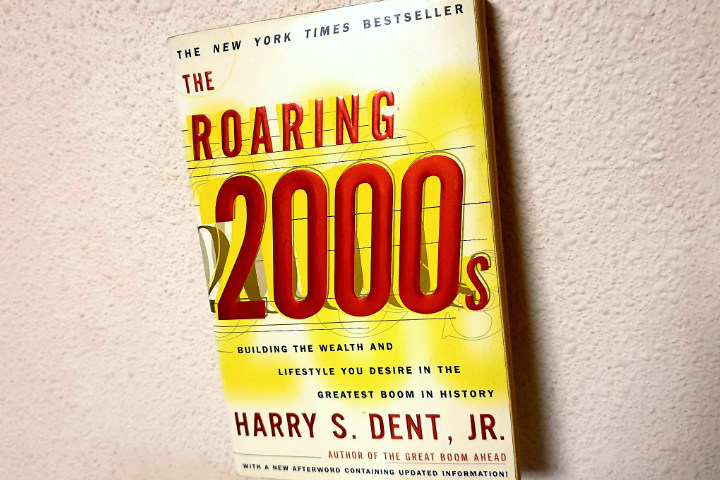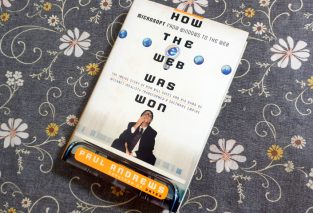In The Roaring 2000s, Harry Dent boldly steps into the arena of economic forecasting, offering a gripping, albeit controversial, prediction of what the new century will bring.
It fuses economics with demographic shifts, historical analysis, and a hefty dose of optimism to argue that the 2000s will be a time of immense prosperity, technological advancement, and unparalleled growth.
While his tone is infectious, his outlook exuberant, and his ideas innovative, the book remains as much a vision of the future as a challenge to current economic paradigms.

For readers who are passionate about understanding the forces that shape markets and societies, the narrative will intrigue, provoke, and entertain. Though it should come with a cautionary note that economic predictions are as volatile as the markets themselves.
What the author does remarkably well is show how much of our modern economy is driven by demographic factors. Primarily, the age of the population.
Using historical data, it argues that economic booms and busts follow predictable patterns shaped largely by the lifecycle stages of the baby boomer generation.
The demographic wave where the ebb and flow of generations impact economic growth and market behavior.
According to Dent, the “Roaring 2000s” will be driven by this aging cohort, whose shift from spending heavily on goods to investing and saving for retirement will reshape entire industries and markets. He doesn’t just predict economic growth for the sake of it. He points to demographic trends, technological advances, and shifts in consumer behavior as the driving forces behind this golden age.
In addition to his economic analysis, his prose is anything but dry.
The argument is brought to life with a writing style that is both engaging and accessible. Presenting complex ideas with clarity and enthusiasm.
The sense of urgency that pulses through the book invites readers to feel the excitement of impending change.
As a result, the book reads more like an invitation to take part in a transformative moment in history than a distant academic treatise.
It’s easy to imagine Dent as the ringleader of an intellectual show, pulling back the curtain to reveal a dazzling future for those who pay attention.
The underlying core of the book lies in his belief that we are on the cusp of a great economic and social boom.
Like the roaring twenties of the last century, the 2000s will see an explosion of wealth, especially in technology and innovation, with the American economy at the center of this worldwide transformation.
Advances in technology, such as the Internet and digital communication, will facilitate this unprecedented economic expansion. This won’t just come from increased productivity. But also from the creation of new industries and investment opportunities.
While demographic trends will propel markets forward.
It’s a rather optimistic vision that makes you feel as though the best is yet to come. It’s almost as if Dent is asking us to “buy in” to the future before it happens, making us believers in a new era of wealth, change, and limitless possibility.
However, it’s important to remember that while technological progress is inevitable, predicting its exact trajectory is as challenging as forecasting next week’s weather.
One of the most provocative parts of the book is its vision of how technology will play a major role in reshaping industries.
Technology will enhance our lives. It is envisioned to revolutionize entire sectors. From transportation and energy to education and healthcare.
The sheer scale of this transformation feels as though we are standing at the threshold of a new industrial revolution.
The “Information Age” is more than a catchphrase. It’s the foundation upon which the next century’s wealth will be built.
Technological advances are predicted to allow for cheaper goods, improved productivity, and greater access to resources for all.
The world of Silicon Valley will be just the beginning, and the economy’s future will be digital, global, and interconnected.
It’s a bold vision, certainly, but one that calls for a leap of faith in the face of uncertainty.
Shortcomings
While the arguments are rooted in empirical data and historical cycles, there is a thread of optimism that borders on naivety.
It’s an underestimation of the complexities of the human element in economic systems.
The predictions about demographic trends and technological advances may have merit. But the manner in which they are presented tend to gloss over the nuances of global markets, social issues, and unforeseen events that can shape our economic future.
Some readers might find the focus on demographics somewhat narrow, as it may not fully capture the complexity of global economic interactions.
The 2000s, after all, have not totally unfolded in the way Dent envisioned. The financial crisis of 2008, global political instability, and even technological disruptions such as the rise of artificial intelligence and climate change have all thrown significant curves into the forecast.
The book also occasionally loses sight of the risks and dangers inherent in the very technological advancements celebrated in the book.
Technology may drive economic growth, but it also breeds inequality, surveillance, and job displacement.
The “disruptive” power of innovation has its dark side. And the narrative seems overly focused on the positive effects without fully acknowledging the societal costs that come with it.
For instance, automation, which was highlighted as a major driver of economic growth, also threatens to displace millions of workers in fields like manufacturing and transportation.
As exciting as the possibilities may be, the ramifications of rapid technological development deserve deeper consideration.
The assumption that economic growth will be inevitable in the 2000s is another point where the book falters.
While the historical analysis suggests that demographic trends can be quite predictable, the global economy is far from static. And political, environmental, and social factors can significantly alter the trajectory of economic progress.
Dent’s overly optimistic tone in this respect can leave readers feeling as though he is not fully acknowledging the forces that lie outside of individual control. Issues that I think he was fully aware of when producing this work.
A more balanced perspective on the potential risks of his predictions would have provided a more well-rounded view of the future.
Biggest Takeaway
This offers a fascinating glimpse into the potential of our time.
It leaves readers with the belief that if we harness the right forces. Of demographic trends, technological progress, and investment in human capital, we might indeed be able to realize an age of prosperity that will make the roaring twenties look like a warm-up act.
The emphasis I would say is on adaptability and forward-thinking in navigating economic change.
The power of demographics and technology is the aspect of the book that will resonate with readers most.
After all, who doesn’t want to feel as though they are on the cusp of something revolutionary?
The forecast could leave you feeling bullish about the future, but let’s just hope we’re not all in for a “bear” market surprise.
While its predictions may not have entirely panned out as anticipated, the book’s underlying message remains crucial.
But one has to applaud the courage to making these predictions. Because when it comes to economic forecasting, it’s not just about having a crystal ball. It’s also a lot about having the courage to look into it.
Economic prosperity is not random. It’s shaped by broader societal trends.
For anyone looking to understand the forces that will drive our future, this provides an interesting, if somewhat optimistic, lens through which to view the next century.
It might not offer all the answers, but it will certainly make you think about the big picture, what has already come, and the potential of what’s yet to come.




